Introduction
Did you know India ranks among the top countries with fascinating monuments? Yes, memorials with the most outstanding designs have been established for the longest time. These include graves for rulers of ancient times. However, we still have those established in honor of the legends that make Indian history.
In the history of India, Shaniwar Wada ranks among the most impressive structures ever built. This one outshines the rest with its unique design. If you haven’t heard of this structure before, do not worry because we’ve got you. This iconic monument was constructed early in the 18th century. This outstanding monument rests in the center of Pune.
Every Indian citizen should know and understand the origin, history, and story behind historical monuments. If not for anything else, at least for the cultural heritage they preserve for our beautiful country, India.
This article outlines the history and relevant facts about the most outstanding building built in the Medieval era, the Shaniwar Wada.
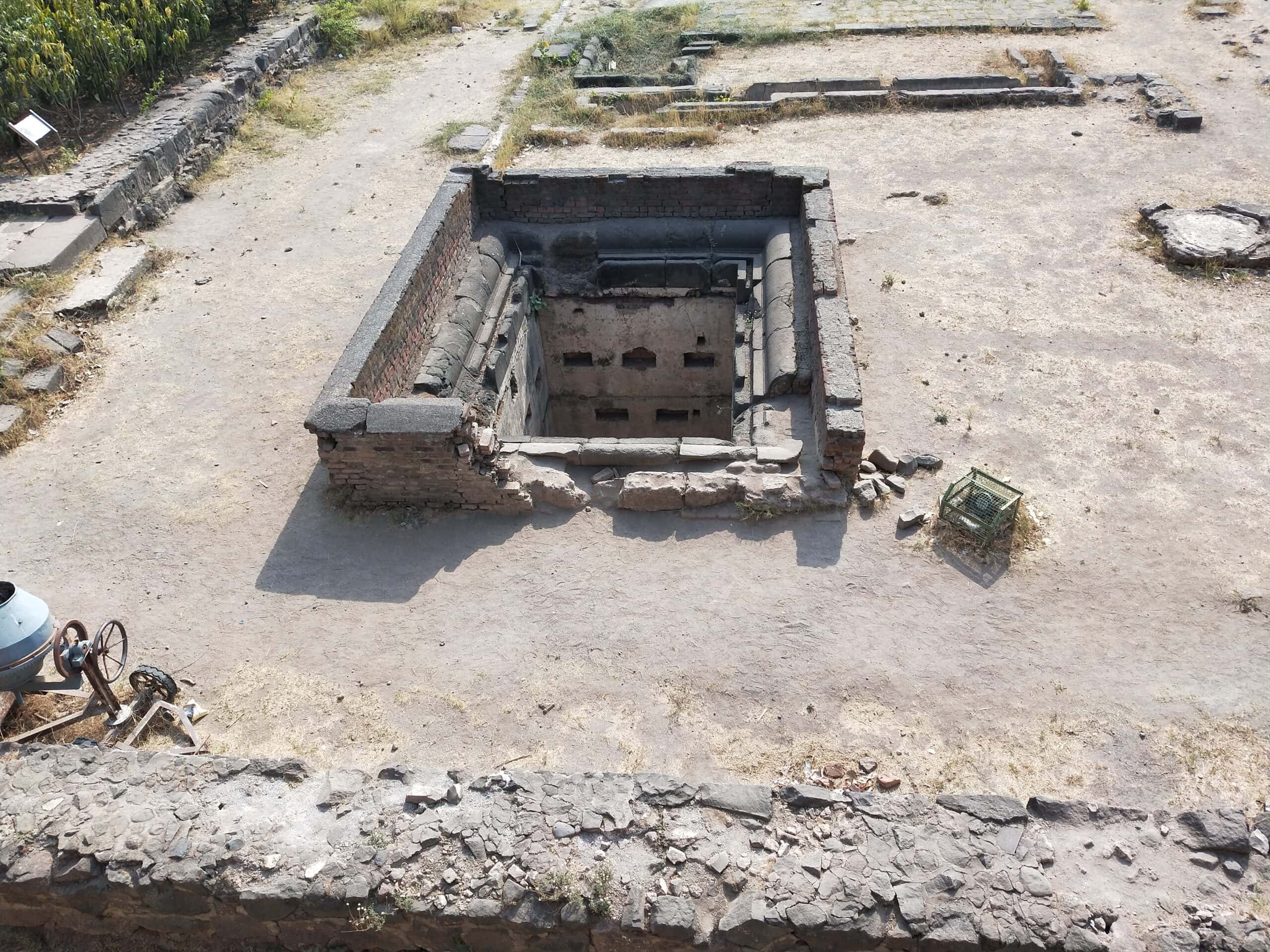
Brief Information
|
Factors
|
Information
|
|
Location
|
Pune
|
|
Year of Establishment
|
1732 CE (290 years old)
|
|
Architectural Design
|
Maratha Imperial Architecture
|
|
Occupants
|
Peshwas of The Maratha Empire
|
|
Founded by
|
Peshwa Bajirao I
|
|
Purpose of building
|
The Maratha Empire chose Pune as its capital, so to establish a fortress and a safe residence for the Peshwa they established Shaniwar Wada.
|
|
Fall down
|
1828 CE (Burned down)
|
History behind building Shaniwar Wada
Initially, the Shaniwar Wada was the resident of the famous Peshwa Bajirao I, one of the greatest Warriors of the Maratha kingdom. The origin of the Shaniwar Wada comes from the popular legend.
One day, Bajirao was riding on his horse when, to his surprise, he saw a hare chasing prey. This scene made Bajirao feel that the area was promising as the naturally timid hare was boldly chasing its prey.
Then, Bajirao built a residential complex known as Shaniwar Wada to stay with his family. The materials needed for constructing the Wada were imported from the nearby areas.
The fort is partly constructed of stone and partly constructed of bricks. There are two stories as to why this happened. One is that the fort was originally supposed to be constructed of stones only.
This didn’t go as planned because the people complained that the stones were only meant for the Kings. After that, it was ordered that the fort be constructed with bricks. The second story says that the construction started with stones and stopped halfway. So, when the construction resumed, they used bricks to finish it.
Reason behind architecture named as the “Shaniwar Wada”
Do you wonder why Bajirao came up with the name Shaniwar Wada? Well, “Shaniwar Wada” means Saturday Residential Complex. In the historic area of Pune, many places and animals are named after the days of the week. This translates to the localities being established or founded on a specific day of the week.
Similarly, Shaniwar Means Saturday. This tells us that the fort’s foundations were laid on a Saturday. Bajirao were set on the foundations of Complex reportedly on January 10, 1730 CE. After that he went there to reside as Peshwa of the Maratha kingdom. This day is believed to have been a Saturday.
It took him approximately two years to complete the Shaniwar Wada. It is said that the opening ceremony was held on January 22, 1732. And surprisingly, it happened that the opening ceremony also happened on a Saturday.
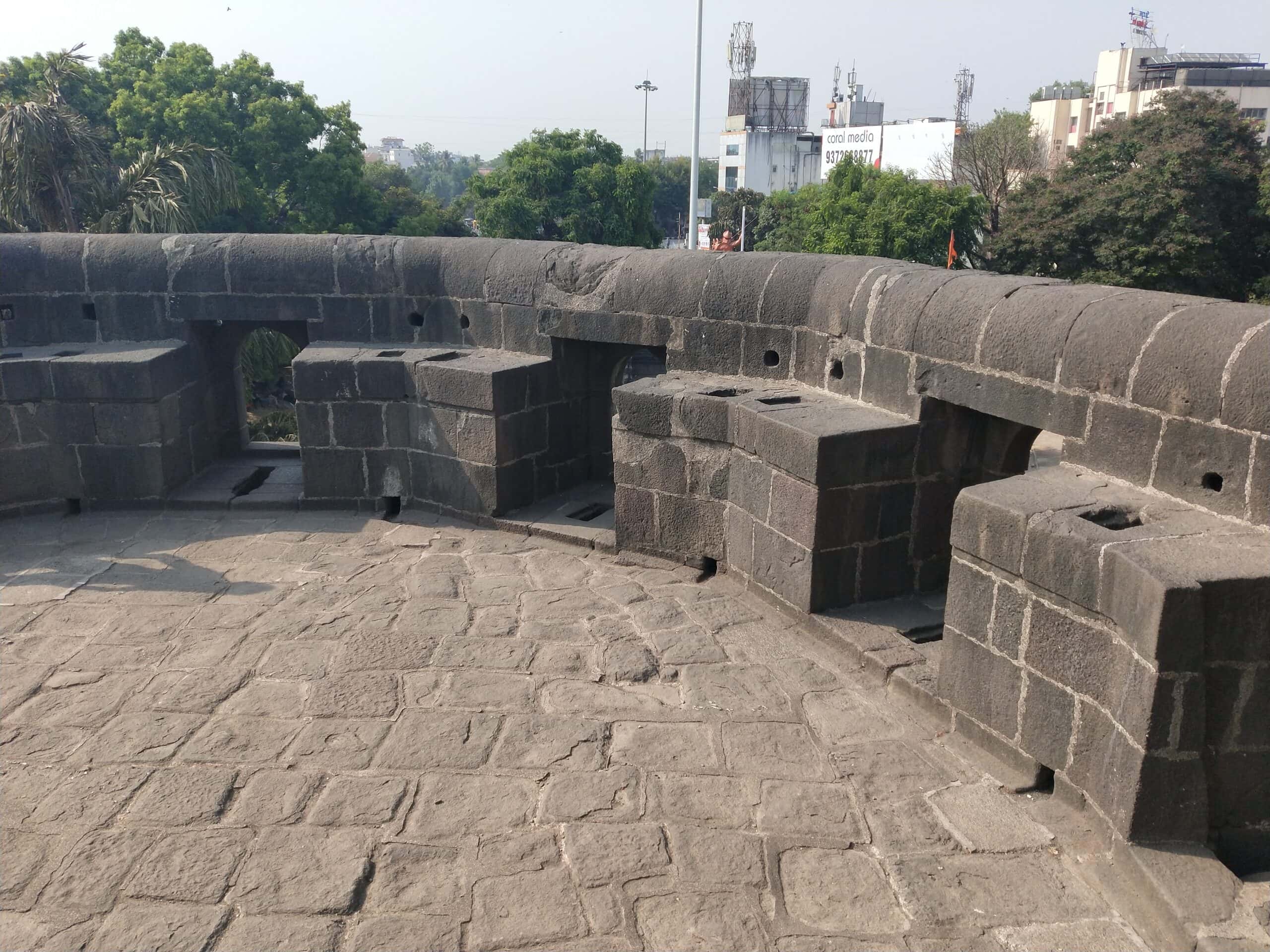
The Initial Design and Improvements
The Initial Design of the Shaniwar Wada had a 2-storey palace and three quadrangles. Later, the Wada was expanded during the reign of the third Peshwa of the Maratha Kingdom, Balaji Bajirao. In addition, another expansion was done under the leadership of Nana Fadnavas.
Five Gates of Shaniwar Wada
Shaniwar Wada has five gates, with the main entrance named Dilidarwaza. The second gate faces north, and it is named the Mastani gate. Obviously Mastani gate was named after the second wife of Bajirao I.
This gate is named after her name because she used this gate to get into the Wada. Ten soldiers guarded this same gate.
There is also a second gate called the Khidki Darwaza. This specific gate was always kept closed. However, it was only opened through a little door that resembled a window almost at the bottom of the gate, hence the name Khidki Darwaza-Meaning a window door.
The third gate is named Ganesh Darwaza. This is because it was close to the Ganesh Mahal. A total of 25 soldiers guarded this gate.
The fourth gate is the Jambul Darwaza or Narayan Darwaza facing south. Mostly Concubines used to enter or leave the Shaniwar Wada via this gate. There is a story about why this gate has the set name, Narayan Gate. I am going to cover this story in the next point.
The last gate, the Delhi Darwaza, faces north, towards Delhi. The doors of this gate were constructed large enough to allow elephants to pass through. On the rare occasions when the elephants charged at the Wada, the doors were equipped with sharp spikes placed perfectly at the height of the forehead of a war elephant.
Real Story behind Haunting History of Shaniwar Wada
After the reign of Bajirao I his son Nanasaheb became Peshwa. But after the battle of Panipat, he died prematurely due to stress. Then his son Madhav Rao became the Peshwa, but he died earlier because of Tuberculosis.
Then, the brother of Madhav Rao named Narayan Rao became Peshwa. But his uncle Raghunath Rao wanted to capture the throne. So in 1733, he ordered haunters to kill Narayan Rao.
Raghunath Rao opened the gate of Shaniwar Wada to assassinate Peshwa. Expert haunters half murdered Narayan Rao and picked him outside the Shaniwar Wada from one of the gates. That gate is now famous as Narayan Darwaja.
After taking him out on the banks of Mula-Mutha river, Peshwa Narayan Rao was killed brutally. Then, Marathi locals believe that his body was cut and thrown in the river.
Some people believe that actually his corpse was taken out of the Shaniwar Wada through this gate for cremation, so it was named “Narayan Darwaza”.

The Palaces inside Shaniwar Wada
The Ganpati Ranga Mahal
The seat of the Peshwa was at the Ganpati Ranga Mahal. This special hall was designed and built by Balaji Bajirao (Nanasaheb Peshwe). He built this in celebration of the Ganpati festival in the year 1755.
This hall was a critical place where many political meetings and events occurred.
Water Resources
The main source of water for the Shaniwar Wada was the Katraj Lake. Throughout the Wada, there were provisions to provide water to its residents. An eight-angled well supplied water to the residences on the top.
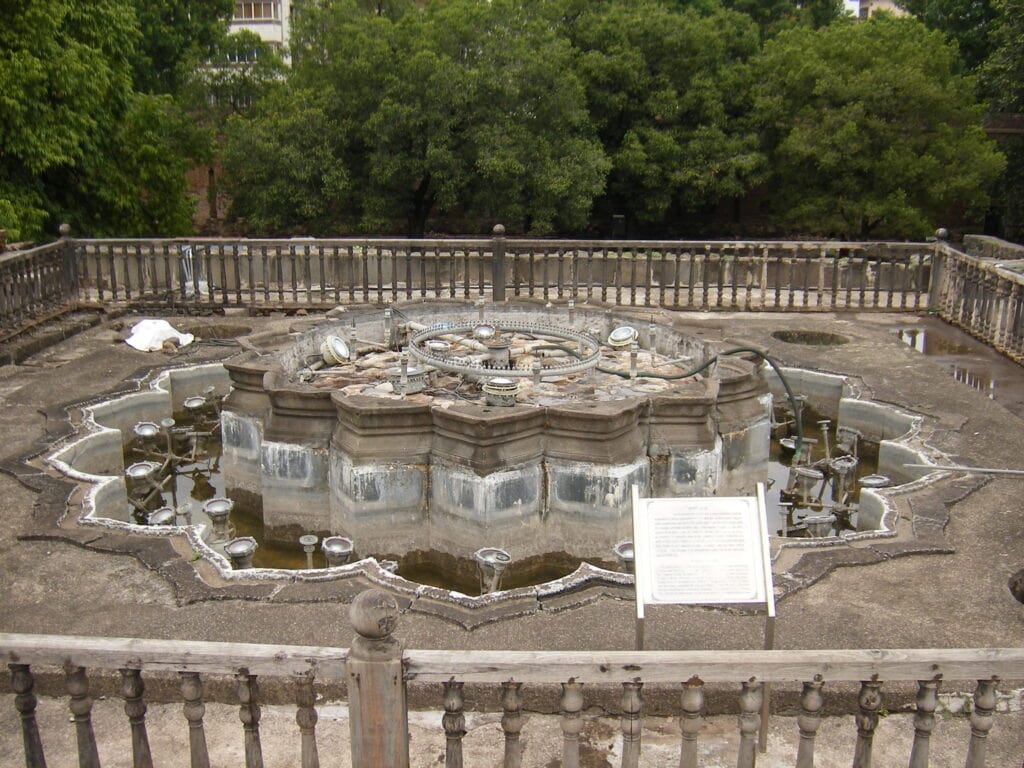
Features of Shaniwar Wada
Today, comprehending the original architectural layout of the buildings within the Shaniwar Wada will be a little challenging.
However, the good news is that European diplomats have recorded their visits to Shaniwar Wada with graphic descriptions of what they saw. These descriptions have been used to locate several iconic Wada structures.
After entering the Shaniwar Wada it used to be thousands in-front of fountains building, so it is named as the “Hazari Karanje”. This was a lotus-shaped fountain – It was constructed purposely for the pleasure of Peshwa Sawai Madhav Rao.
It was designed as a 16-petal lotus with about 197 tubes that are still visible today. It is said to have been the unique and intricate fountain of all time.
Secrets of Shaniwar Wada
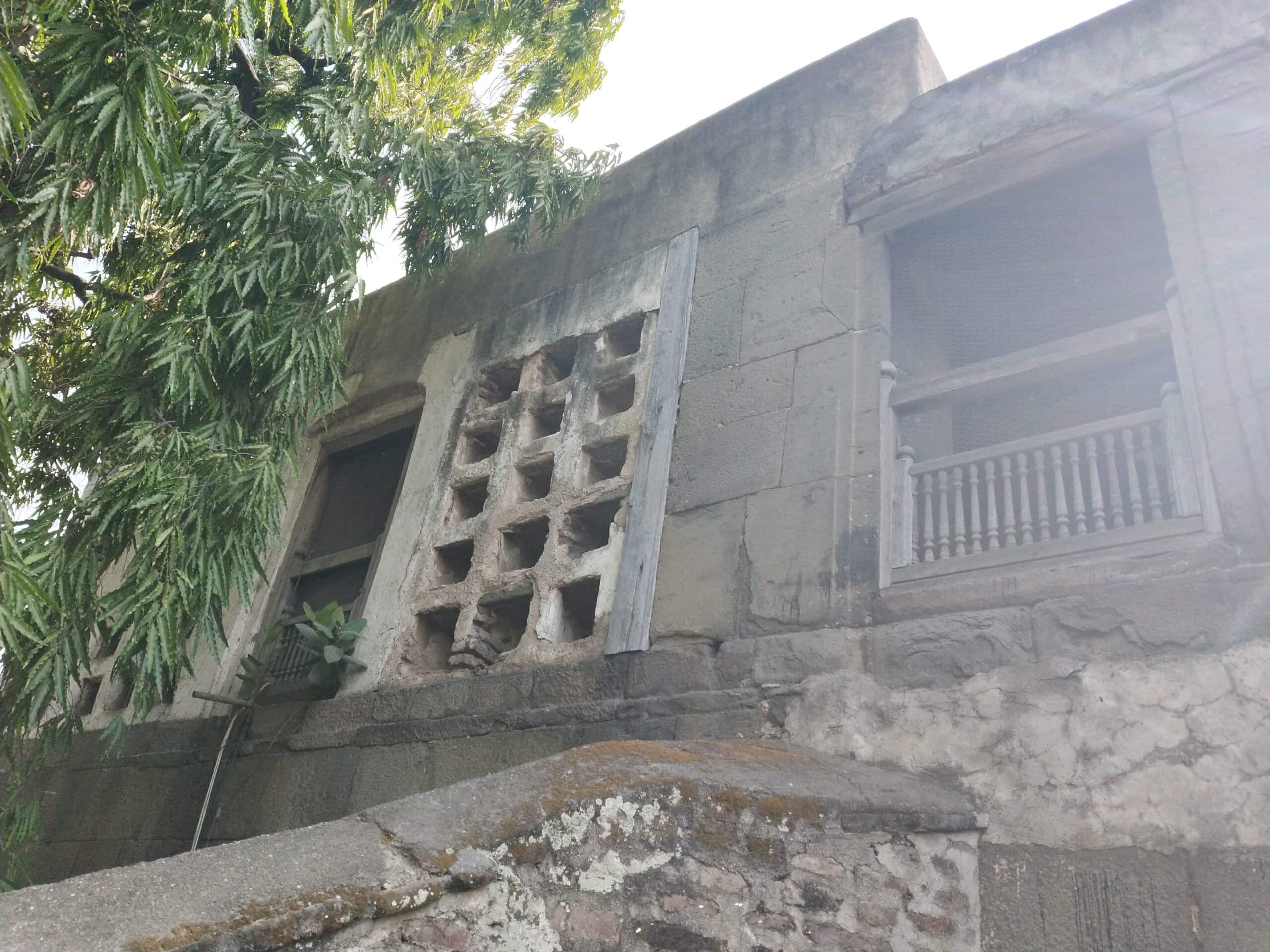
The Office of the Peshwa and Chhatrapati
The Shaniwar Wada was not just a residence building for the Peshwa. It was a hostage for many people, horses, and War elephants. Even to date, there are remains of the stables for horses and elephants. It also hosted the offices of the Chhatrapati of the Maratha Kingdom.
The Mudder of a Peshwa in the Shaniwar Wada
The Ganesh festivals were coming to an end when the worst tragedy was witnessed in the Shaniwar Wada. It was horrific and terrifying when the residents learned that Peshwa, Narayan Rao had been killed in cold blood. His uncle ordered his assassination on August 3, 1773.
This ruthless mission was achieved through the chief palace guard named Singh Gardi. He had access to almost every section of the Shaniwar Wada. So, it was easy for him and his men to access the location of Peshwa Narayan. They managed to kill the Peshwa alongside the other ten palace workers.
After assassination, soon ministers came to know that a wife of Narayan, Gangabai was expectant. She later got a boy and named him Sawai Madhav. After just 40 days, the baby was officially declared as the next Peshwa of the Maratha Kingdom.
This was planned and achieved by ministers during the reign of Nana Phadnis. It was expected that he would take over the Peshwaship as he aged. He later served as the Peshwa of Maratha for 21 years but out of the Shaniwar Wada.
The Fall of Shaniwar Wada
Shaniwar was under the control of the Peshwas until 1818 when the British East-India Company took over the Shaniwar Wada.
The British then used the Wada as a prison to accommodate mentally challenged patients and for military purposes.
Despite the ample use of wood in the construction of the Wada, there was a lack of a proper firefighting system. This made the Wada Vulnerable to fires.
There were fires in 1791, 1808, 1812, 1813, and 1828. On the 27th of January 1828, the Wada was said to have been burned down. I had burned for seven days non-stop.
The heavy granite ramparts and the strong teak gateways are the original structures that survived the fire. It was much later when the government decided to take an interest in preserving historical sites under the Mumbai governor, Sir George Llyod.
The first excavation was done at the Shaniwar Wada.
Current situation of Shaniwar Wada
Today Shaniwar Wada remains one of the most alluring tourist destinations even after its current ruin condition (Pune City). In its days, the Wada covered almost the entire city. But today, it only covers a total area of 625 acres.
Interestingly, there have been stories hinting that the Wada is a haunted space. This haunting is linked to the spirit of one of the Peshwa who occupied the Wada, Narayan Rao, his uncle murdered. It is said that his spirit still hovers over the Wada at night.
Have you heard of the Light and Sound Show? It is an exciting event that takes place at the Shaniwar Wada. The show only holds in the evenings. This show has been a major attraction among the many in the palace. The show revives the Medieval era and showcases the way of Peshwaship in their times.
Shaniwar Wada Facts
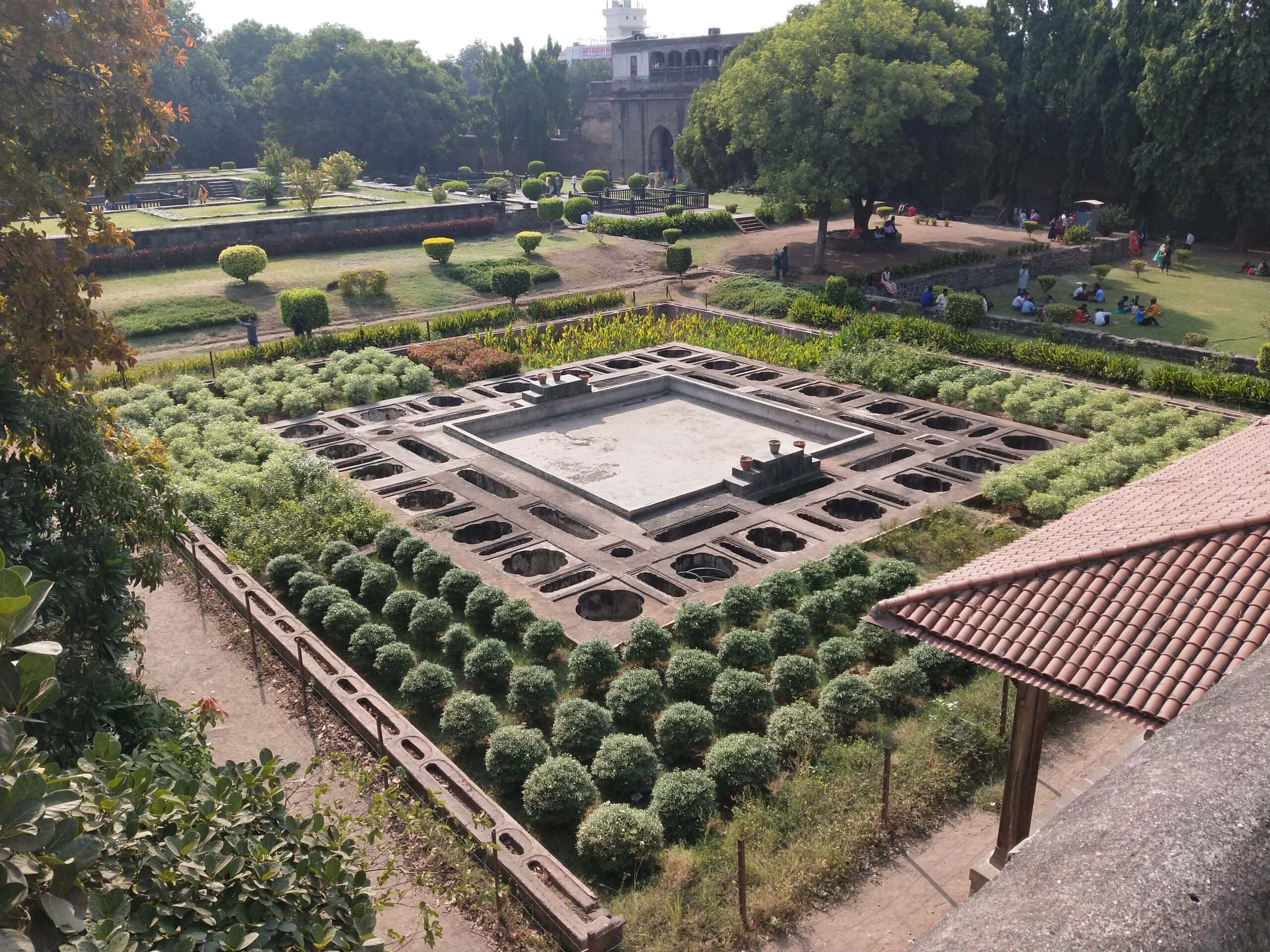
- The entire construction process of the Shaniwar Wada cost INR 16110. This may sound cheap today, but it was a princely amount in the medieval era.
- According to the Locals, the voices of Peshwa Narayan are heard on the night of the Full moon, begging his uncle to save him. However, there’s no evidence except for the claims from those who reside near the Wada.
- A famous television reality named “The Amazing Race Asia” once featured Shaniwar Wada. On the other hand, a Bollywood movie named Bajirao Mastani also displayed a similar view of Shaniwar Wada.
- From 1732 CE to 1818 CE, the Shaniwar Wada served as the residence of all the Peshwas.
- After the rise of the Maratha Kingdom, the Shaniwar Wada was transformed into a center in the Politics of India. Many political events in the 18th century took place here.
- The opening ceremony for the Wada was planned and performed in line with the customs of the Hindu religion. This happened on January 22, 1732.
- The Wada was finally destroyed by a fire that no one has ever known the source or the cause of the fire.
Potential of Shaniwar Wada to become World Heritage Site
The Shaniwar Wada has all the qualities considered when nominating a site for the WHS (World Heritage Site). First, it’s a unique structure to be established in its time.
During the Medieval Era, it was quite a challenge to construct a unique structure like the Shaniwar Wada. A fort with solid fortification to repel the mighty forces from the war elephants.
In addition to the beauty of Wada, the building was uniquely designed. Even if the gates were to be left wide open, it would still be challenging for the enemy to access the main Wada. This was an added advantage to the Peshwas, for they felt safer and well-protected to attack their enemies.
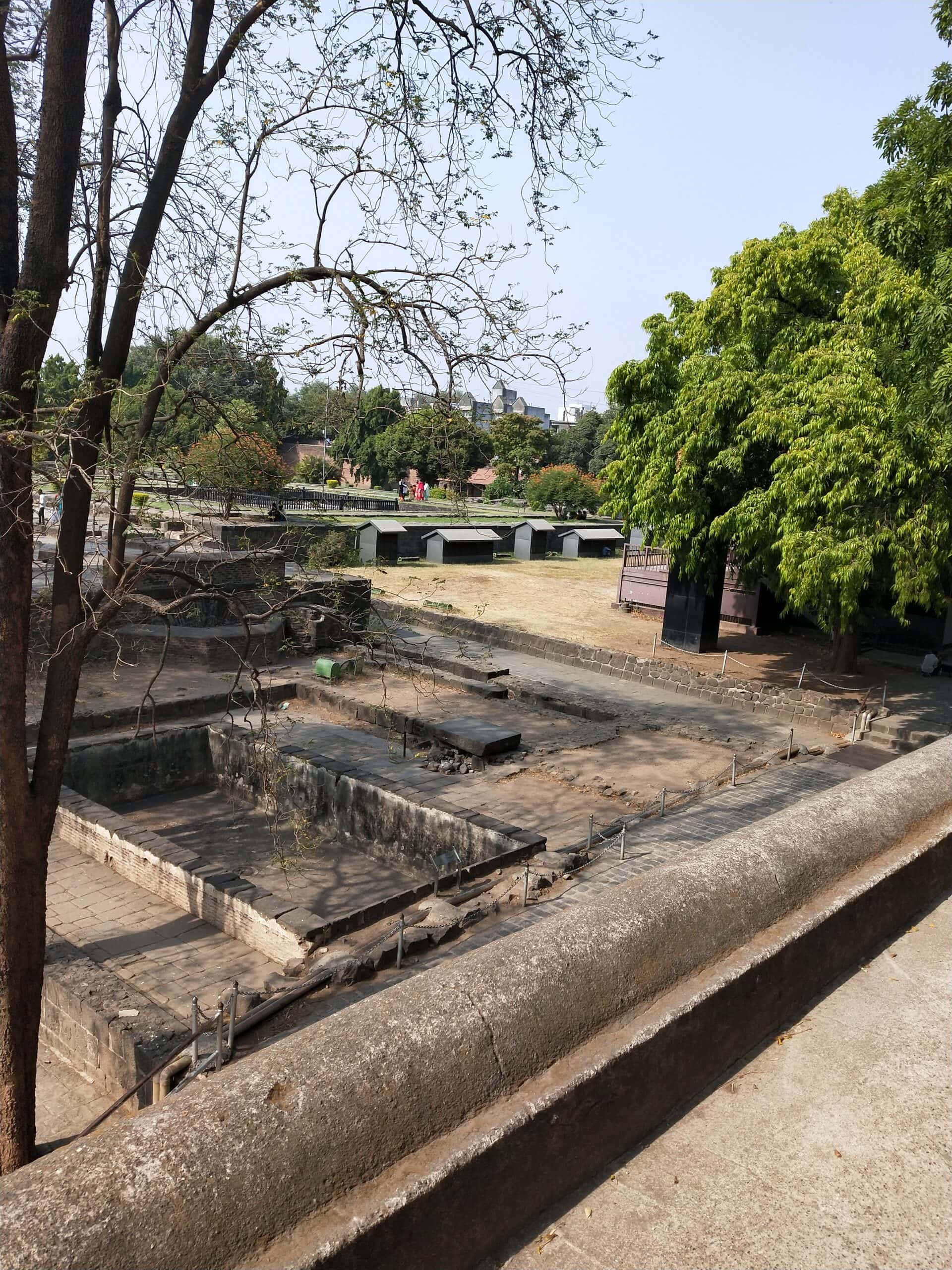
If you are interested in learning more about this fort, then visit Shaniwar Wada History to read more about it.
Citations
Images Credits
Hazari Karanje – Old style fountains, Credit: shankar s.
Shaniwar Wada Fort at Pune, Credit: Sreein Sreedhar
